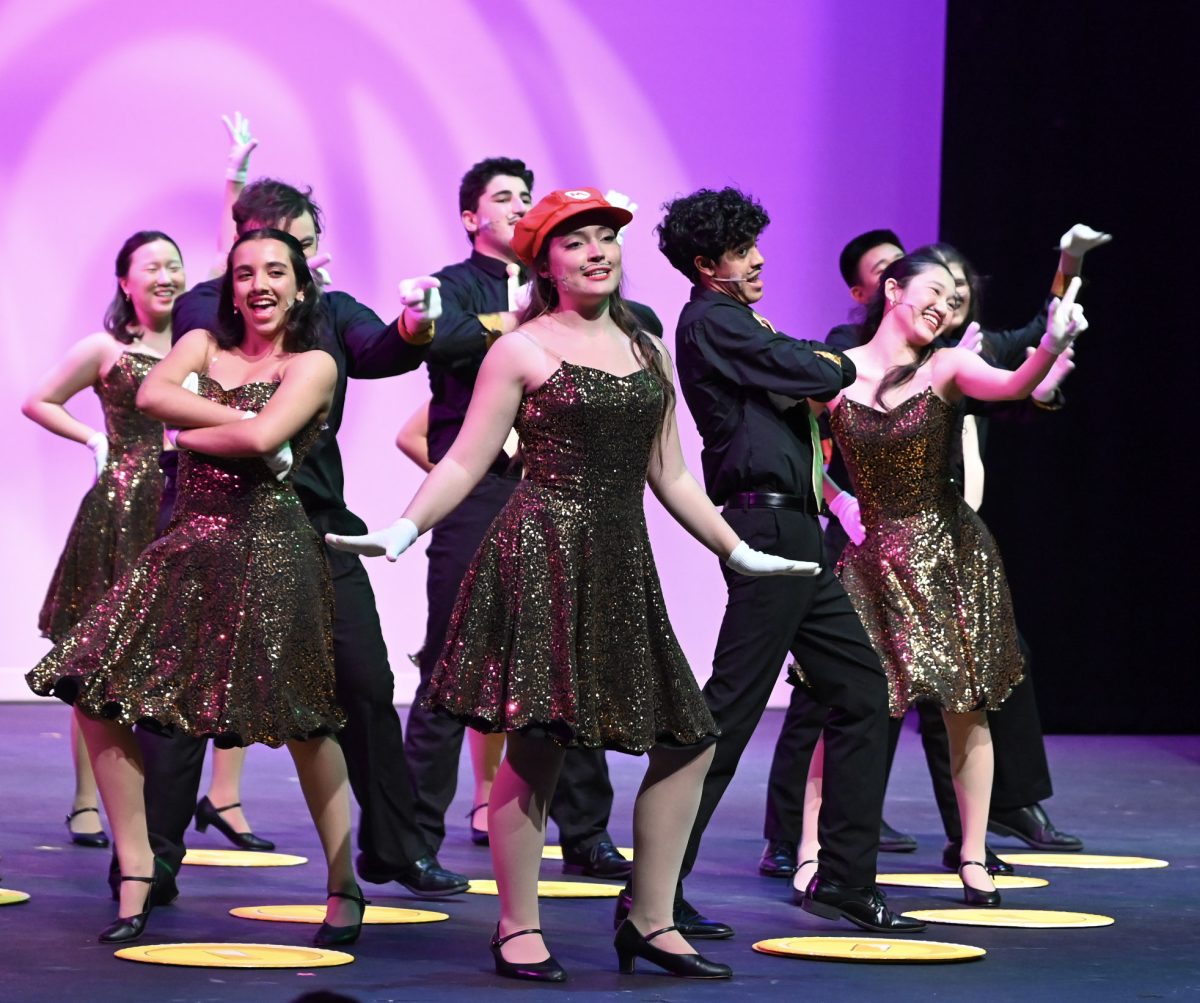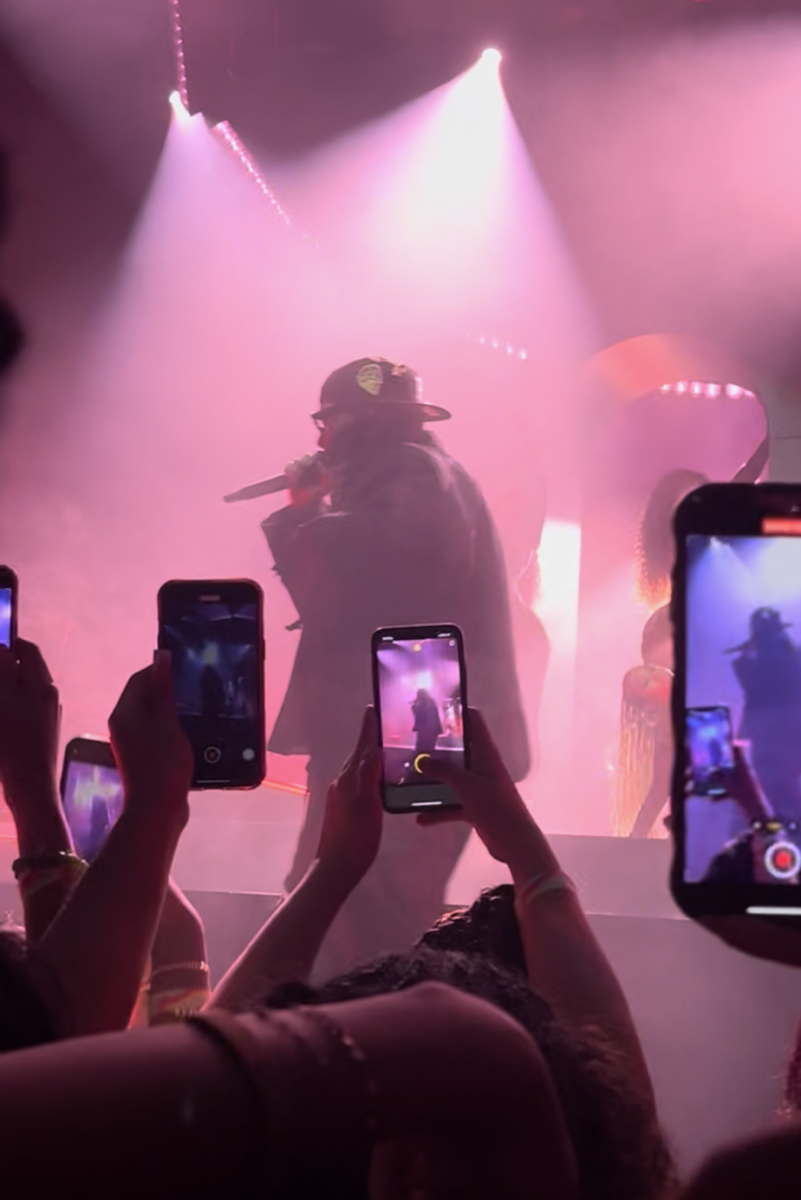A group of teenage fans stop in front of a poster depicting a gilded snake lunging at a metallic songbird mid-flight amongst a garden of golden roses behind the window of the IMAX theater. Other poster designs feature uniforms of deep, royal reds and contrast against a ragged rainbow dress. Within the theaters are showings of a story of rosebuds and bombs, of forest-born singers and of birds that mimic their song.
“The Hunger Games: The Ballad of Songbirds & Snakes,” a prequel to the original Hunger Games series, debuted on Nov. 16 in Europe and on Nov. 17 in the United States. The film grossed $135.6 million by its fourth weekend at the domestic box office.
To understand the highly anticipated adaptation in its entirety, one must also understand the source material — the novel by Suzanne Collins. Junior Hima Thota read the original series in grade school and the latest book prior to watching the film to better grasp the plot.
“She wrote the series inspired by the insensitivity to the violence of the war in Iraq back in 2003,” Hima said. “The reason I love it and the reason I also love hearing Snow’s backstory is because it covers a lot of meaning behind the power dynamics of the government, the press and the actual people.”
The action-adventure movie unfolds 64 years prior to the first Hunger Games installment and showcases one of the first Games held after rebellion. The narrative centers around the once affluent Snow family, particularly the eldest son Coriolanus Snow, their post-war struggles and the dire quest for survival and prominence in the Capitol of Panem.
The Capitol’s ruthless punishment on the rebellious districts comes in the form of the annual Hunger Games, a televised spectacle of life and death. Coriolanus, a student at the Capitol’s Academy, unexpectedly finds himself mentoring Lucy Gray Baird, a tribute from the poverty-stricken District 12. As the Games approach, Coriolanus navigates the complexities of political infighting and rebellion under the watchful gazes of Dean Casca Highbottom and mastermind behind the Games, Dr. Volumnia Gaul.
Coriolanus and Lucy Gray’s relationship deepens, marked by moments of intimacy and mutual understanding. Yet, the novel takes a tragic turn as the Games conclude, leading to unforeseen consequences that shape the characters’ destinies. The narrative explores themes of friendship, betrayal, authority and oppression, providing a nuanced perspective on the origins of the Hunger Games.
The film caters to ardent followers of the franchise and those unacquainted with dystopian narratives. translated onto the cinematic canvas, Collins’ story explores the societal structures, political complexities and human resilience inherent to dystopian fiction.
“It’s a good introduction into the Hunger Games Universe, either if you’re a fan who’s read all the books or you’re just getting into it,” junior Audrey Feng said. “I think as a stand alone it’s pretty good too. It gives President Snow a lot more background and the connection between Katniss and Lucy Gray explains a lot more about his hatred for her and District 12 and the mockingjays in general.”
Alternatively, viewers can enjoy the romance throughout the movie without fully diving into the complexities of the series’ political landscape.
“There can be these big societal issues that [the movie] addresses, but at the same time, it doesn’t feel so overwhelming that it’s hard to understand,” sophomore Natalie Barth said. “It can still be enjoyable on a personal level because even though there are political issues that it goes into in depth, there’s romance.”
“The Ballad of Songbirds & Snakes” rekindles interest within a fandom that waned over time. Through an exploration of the franchise’s foundational elements, the film encourages fans to rediscover the history of Panem and draw new connections between the Hunger Games’ fictional universe and our own world.
“Look at the parallels from Snow’s time in the Capitol: the way Dr. Gaul claimed that since one of her Capitol students died, every single tribute in that arena must die,” Hima said. “And years later, there’s Katniss and there’s Snow and the bombing of the hospital. There are a lot of real life comparisons. People are realizing that this quote-unquote dystopian world that Suzanne Collins created is not so dystopian.”


















![“[Building nerf blasters] became this outlet of creativity for me that hasn't been matched by anything else. The process [of] making a build complete to your desire is such a painstakingly difficult process, but I've had to learn from [the skills needed from] soldering to proper painting. There's so many different options for everything, if you think about it, it exists. The best part is [that] if it doesn't exist, you can build it yourself," Ishaan Parate said.](https://harkeraquila.com/wp-content/uploads/2022/08/DSC_8149-900x604.jpg)




![“When I came into high school, I was ready to be a follower. But DECA was a game changer for me. It helped me overcome my fear of public speaking, and it's played such a major role in who I've become today. To be able to successfully lead a chapter of 150 students, an officer team and be one of the upperclassmen I once really admired is something I'm [really] proud of,” Anvitha Tummala ('21) said.](https://harkeraquila.com/wp-content/uploads/2021/07/Screen-Shot-2021-07-25-at-9.50.05-AM-900x594.png)







![“I think getting up in the morning and having a sense of purpose [is exciting]. I think without a certain amount of drive, life is kind of obsolete and mundane, and I think having that every single day is what makes each day unique and kind of makes life exciting,” Neymika Jain (12) said.](https://harkeraquila.com/wp-content/uploads/2017/06/Screen-Shot-2017-06-03-at-4.54.16-PM.png)








![“My slogan is ‘slow feet, don’t eat, and I’m hungry.’ You need to run fast to get where you are–you aren't going to get those championships if you aren't fast,” Angel Cervantes (12) said. “I want to do well in school on my tests and in track and win championships for my team. I live by that, [and] I can do that anywhere: in the classroom or on the field.”](https://harkeraquila.com/wp-content/uploads/2018/06/DSC5146-900x601.jpg)
![“[Volleyball has] taught me how to fall correctly, and another thing it taught is that you don’t have to be the best at something to be good at it. If you just hit the ball in a smart way, then it still scores points and you’re good at it. You could be a background player and still make a much bigger impact on the team than you would think,” Anya Gert (’20) said.](https://harkeraquila.com/wp-content/uploads/2020/06/AnnaGert_JinTuan_HoHPhotoEdited-600x900.jpeg)

![“I'm not nearly there yet, but [my confidence has] definitely been getting better since I was pretty shy and timid coming into Harker my freshman year. I know that there's a lot of people that are really confident in what they do, and I really admire them. Everyone's so driven and that has really pushed me to kind of try to find my own place in high school and be more confident,” Alyssa Huang (’20) said.](https://harkeraquila.com/wp-content/uploads/2020/06/AlyssaHuang_EmilyChen_HoHPhoto-900x749.jpeg)











